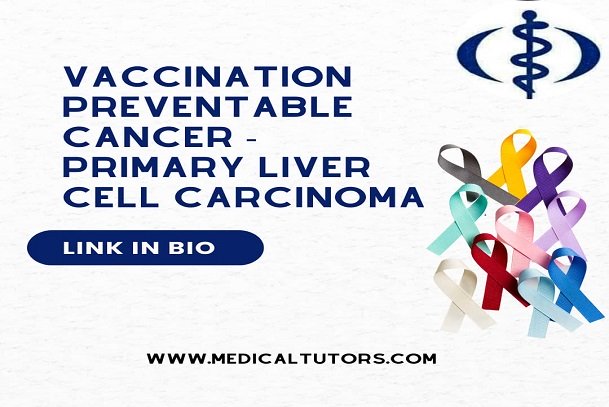 Wash your hands regularly and wear a face mask.
Learn more
Wash your hands regularly and wear a face mask.
Learn more

Introduction
Liver cancer is cancer that begins in the cells of the liver. It is a condition that makes the normal cells in the liver become abnormal both in appearance and behavior. It is one of the few cancers that is more associated with both genders, yet more common among men.
Recognizing Liver Cancer
At an earlier stage, liver cancer does not show any form of symptoms, only when it has gotten to a critical stage. At this stage, certain signs begin to manifest, and they include:
What Causes Liver Cancer?
The main cause of liver cancer is still unknown; however, most liver cancers have links to chronic infections such as hepatitis B or C virus and cirrhosis. Yet some certain risk factors can increase a person's risk of having liver cancer.
Factors that increase the risk of liver cancer include:
Chronic Viral Hepatitis (especially from Hepatitis B, C, and D): Worldwide, the most common risk factor for liver cancer is chronic infection with the hepatitis B virus. Chronic viral hepatitis infections (hepatitis B and hepatitis C) cause at least 80% of all liver cancers. More than 50% of all liver cancers could be prevented with increased use of the hepatitis B vaccine and better treatments for chronic hepatitis B and curative treatments for hepatitis C infections.
Cirrhosis: Cirrhosis occurs when damaged liver cells are replaced by scar tissue, which reduces the liver’s ability to function normally. People diagnosed with cirrhosis have an increased risk of liver cancer and require more frequent monitoring for this type of cancer.
Smoking
Smoking by itself may not cause liver cancer, but it dramatically increases the risk, especially in people who have other risk factors, such as chronic hepatitis B or C infections.
Family History of Liver Cancer: A person’s risk of developing liver cancer increases if they have a family history of liver cancer.
Environmental Toxins: Exposure to certain environmental toxins such as aflatoxin (found in molds that contaminate maize, rice, soybeans, and groundnut), vinyl chloride, and thorium dioxide can increase the risk of liver cancer
Excessive Alcohol Consumption: Alcohol abuse is a leading cause of cirrhosis, which in turn is linked to an increased risk of liver cancer.
Diabetes, Obesity, and Nonalcoholic Fatty Liver Disease: There is a strong link between type II diabetes and liver cancer. Excessive fat in the liver is common among persons with type II diabetes and may increase the risk of cirrhosis and liver cancer. This risk is higher in patients who also have other risk factors, such as heavy alcohol consumption or chronic viral hepatitis infections. Obesity, which can contribute to fatty liver disease and cirrhosis, is a major risk factor for the development of type II diabetes, which, in turn, can increase the chance of developing liver cancer. In nonalcoholic fatty liver disease, excess fat builds up in the liver of people who drink little or no alcohol. The most severe form of nonalcoholic fatty liver disease is called nonalcoholic steatohepatitis (NASH). People with NASH have fat in their liver, along with inflammation and liver damage. They usually have no symptoms and do not know that they have a liver problem. NASH can be severe and can lead to cirrhosis.
Certain Inherited Liver Diseases: People who have certain inherited liver diseases such as hemochromatosis and Wilson’s disease have an increased risk of liver.
Race/Ethnicity, Gender, and Age: Liver cancer is more common in men than in women no matter the race or ethnicity. Male gender increases the risk of liver cancer if the man already has liver disease.
Anabolic Steroid Use: Male hormones abused by athletes to increase muscle can slightly increase liver cancer risk with long-term use.
How To Prevent Liver Cancer
Liver cancer can be prevented through:
The Hepatitis B Vaccine: The hepatitis B vaccine was named the first “anti-cancer” vaccine because it prevents chronic hepatitis B infections, thereby preventing liver cancer caused by the hepatitis B virus. Individuals can reduce their risk of hepatitis B by receiving the hepatitis B vaccine. The vaccine can be given to almost anyone, including infants, older adults, and those with compromised immune systems; that’s why the following individuals should consider having the hepatitis vaccine:
Reduce the Risk of Cirrhosis: Cirrhosis is scarring of the liver, and it increases the risk of liver cancer. Individuals can reduce their risk of cirrhosis if:
Treating Underlying Conditions: Some other conditions can lead to liver cancer, such as diabetes and hemochromatosis. Treating these before they develop into liver cancer can reduce the risk of complications.
Limiting Tobacco Use: Reducing or non-intake of tobacco (smoking) can help avoid cancer of the liver, especially in people who have hepatitis B and C.
Hepatitis C Prevention: There is no sure way to prevent hepatitis C and no vaccination against the virus. However, one can reduce the risk of infection by engaging in protected sex and avoiding sharing sharp objects